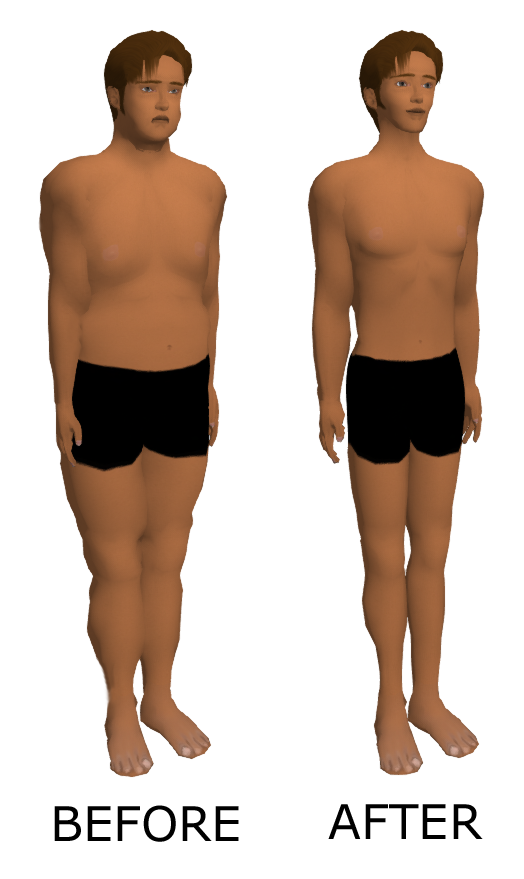For Gloria Lemos, a 65-year-old grandmother living in Pasco, the family tradition of cracking cascarones over relatives' heads at Easter brings back fond childhood memories of running, laughing ... and seeing elaborate hairdos covered in confetti and egg shells.
Cascarones — hollowed-out eggs filled with confetti or small prizes — go back at least six generations in her Mexican-American family, Lemos says.
"When people weren't looking, you'd go smash them in their nice hairdos and their nice Easter clothes," she recalls. "And it'd make a mess. And that was the fun of it."
The tradition's roots are in Mexico and other Latin American countries, where cascarones (the word means "eggshells" in Spanish) are used for fiestas and other celebrations. Popular for generations as an Easter tradition in the Southwest, they are now appearing elsewhere in the United States.
Having a confetti-filled cascarone break over you is supposed to bring good luck.
To make cascarones, eggs are emptied, cleaned, colored (often using Easter egg dye kits), allowed to dry, then filled with confetti. The egg hole is sealed with colorful tissue paper.
It makes for a lot of scrambled eggs, says Lemos, and other dishes.
In her day, the process took a lot of time, which was the point, she says. "It kept us (kids) busy."
Every family had its own cascarone-decorating traditions, with some drawing elaborate images in crayon.
"Can you imagine an empty egg shell, and trying to make a pretty decoration on it?" asks Lemos. "Yeah, we had a lot of fun with those."
Lemos' daughter, Tessa Lemos Del Pino of Nashville, Tenn., hasn't continued the tradition with her own two children — her son has an egg allergy — but other moms are carrying on the cascarone tradition. And they blog about it.
Roxana A. Soto, of Denver, launched the bilingual blog SpanglishBaby with a college friend in 2009. She posted about cascarones at this time last year. Soto is Peruvian and didn't have cascarones as a child, but she's adopted the craft for her two young children.
"I want them to grow up with the Latino culture ingrained," says Soto.
Her kids enjoyed making and smashing cascarones last year. "The actual activity — doing the craft — is fun," says Soto.
For those who want the fun of the smash but not the mess of the craft, cascarones are sold in stores throughout the Southwest, in California and elsewhere. They're sold online at sites such as Amols, a party favor store, and in several Etsy.com shops.
Yvonne Castaneda is vice president of Silly Rabbit Confetti Eggs, a San Antonio, Texas, company that sells confetti-filled eggs to regional and national stores, such as Walmart and Walgreens, in the Southwest. The product is inching north, says Castaneda, as the cascarone craze catches on.
Sales have "been doing great. The demand is unbelievable," says Castaneda. "The confetti egg has become very, very popular."
Sales are at their highest around Easter, but Castaneda says they're also used at birthday parties, fiestas, school carnivals and Halloween parties.
JCPenney's March catalog featured a two-page spread about making cascarones.
Cynthia Leonor Garza's family brings out the cascarones at weddings, graduations and anytime there's a celebration.
"I have an aunt who's notorious for carrying cascarones in her purse for graduations," Garza says. "You look at my high school graduation pictures and there's confetti all over my head because somebody cracked one over me."
Garza lives in Washington, D.C., where she runs an online shop of Latino-inspired children's clothes and toys, but she grew up in South Texas. Garza recalls crossing the border to Mexico to pick up a massive bag of 10 dozen cascarones.
"I grew up an hour from the border," recalls Garza. "You'd haul that huge bag back with you home. You can imagine the big party you'd have with those cascarones."
It's that annual border crossing with her mother that Garza treasures most.
"I think of that every time this time of year rolls around," she says. Meanwhile, "the (egg) breaking is one big blur."
Garza, Soto and Lemos Del Pino all have posted online about how to make cascarones. It's similar to dying hard-boiled eggs, with a few extra steps:
1. Cut a hole in one end of the egg and dump out the egg.
2. Clean and dry the shells. You can sanitize them with a bleach-and-water mixture.
3. Color shells with bright Easter egg dye or food coloring.
4. Further decorate, if you like, with glitter, crayons and stickers.
5. Once the eggs are dry, fill them with confetti. (Extend the fun by having kids make their own confetti, using a hole punch.)
6. Cover the shell hole with tissue paper and a glue paste made from flour and water.
7. Eat a mess of scrambled eggs.
Resources:
Find tutorials and more photos of cascarones, the confetti-filled eggs, and other egg craft projects on these websites:
• http://spanglishbaby.com/finds/amiguitos-conejitos-cascarones-with-a-modern-twist/
• http://tikitikiblog.com/how-to-make-easter-cascarones/#axzz1r8p6xhpY
• http://www.dosborreguitas.com/blogs/news/5874103-how-to-make-cascarones-or-confetti-filled-easter-eggs
• http://gracies-eggies.blogspot.com/2010/02/confetti-reigns.html
• http://www.marthastewart.com/269210/confetti-eggs
• http://familyfun.go.com/crafts/cascarones-667194/
This entry passed through the Full-Text RSS service — if this is your content and you're reading it on someone else's site, please read the FAQ at fivefilters.org/content-only/faq.php#publishers. Five Filters recommends: Donate to Wikileaks.
 14/12/2007 - 0 Comments
14/12/2007 - 0 Comments 05/04/2021 - 0 Comments
05/04/2021 - 0 Comments 25/09/2008 - 0 Comments
25/09/2008 - 0 Comments 04/03/2021 - 0 Comments
04/03/2021 - 0 Comments 23/03/2012 - 0 Comments
23/03/2012 - 0 Comments

0 意見:
Post a Comment